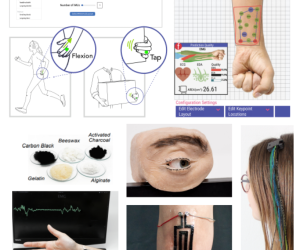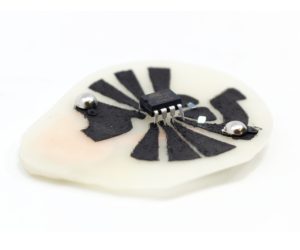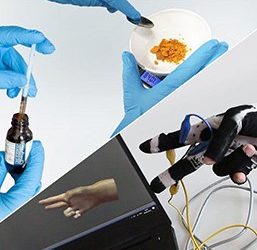Biohybrid Devices: Prototyping Interactive Devices with Growable Materials Abstract Living bio-materials are increasingly used in HCI for fabricating objects by growing. However, how to integrate electronics to make these objects interactive still needs to be clarified. This paper presents an exploration of the fabrication design space of Biohybrid Interactive Devices, a class of interactive devices fabricated by merging electronic components and living organisms. From the […]
Posted: 25/08/2023
Under:
Design and Fabrication of Body-Based Interfaces (Demo of Saarland HCI Lab) This Interactivity shows live demonstrations of our lab’s most recent work on body-based interfaces. The soft, curved and deformable surface of the human body presents unique opportunities and challenges for interfaces. New form factors, materials and interaction techniques are required that move past the conventional rigid, planar and rectangular devices and the corresponding interaction […]
Posted: 15/04/2023
Under:
Interactive Bioplastics A DIY approach for composing soft interactive devices from bio-based and bio-degradable materials. Abstract Designers and makers are increasingly interested in leveraging bio-based and bio-degradable “do-it-yourself” (DIY) materials for sustainable prototyping. Their self-produced bioplastics possess compelling properties such as self-adhesion but have so far not been functionalized to create soft interactive devices, due to a lack of DIY techniques for the fabrication of […]
Posted: 18/08/2022
Under:
Eyecam Anthropomorphic Webcam What if seeing devices looked like us? Eyecam is a prototype exploring the potential future design of sensing devices. Eyecam is a webcam shaped like a human eye that can see, blink, look around and observe us. Eyecam is a prototype developed and built by Marc Teyssier. The publication is a collaboration with members of the teams: Marion Koelle, […]
Posted: 28/01/2021
Under:
PolySense Augmenting Textiles with Electrical Functionality using In-Situ Polymerization We present a method for enabling arbitrary textiles to sense pressure and deformation: In-situ polymerization supports the integration of piezo-resistive properties at the material level, preserving a textile’s haptic and mechanical characteristics. We demonstrate how to enhance a wide set of fabrics and yarns using only readily available tools. To further support customization by the designer, […]
Posted: 30/07/2020
Under:






Recent Comments